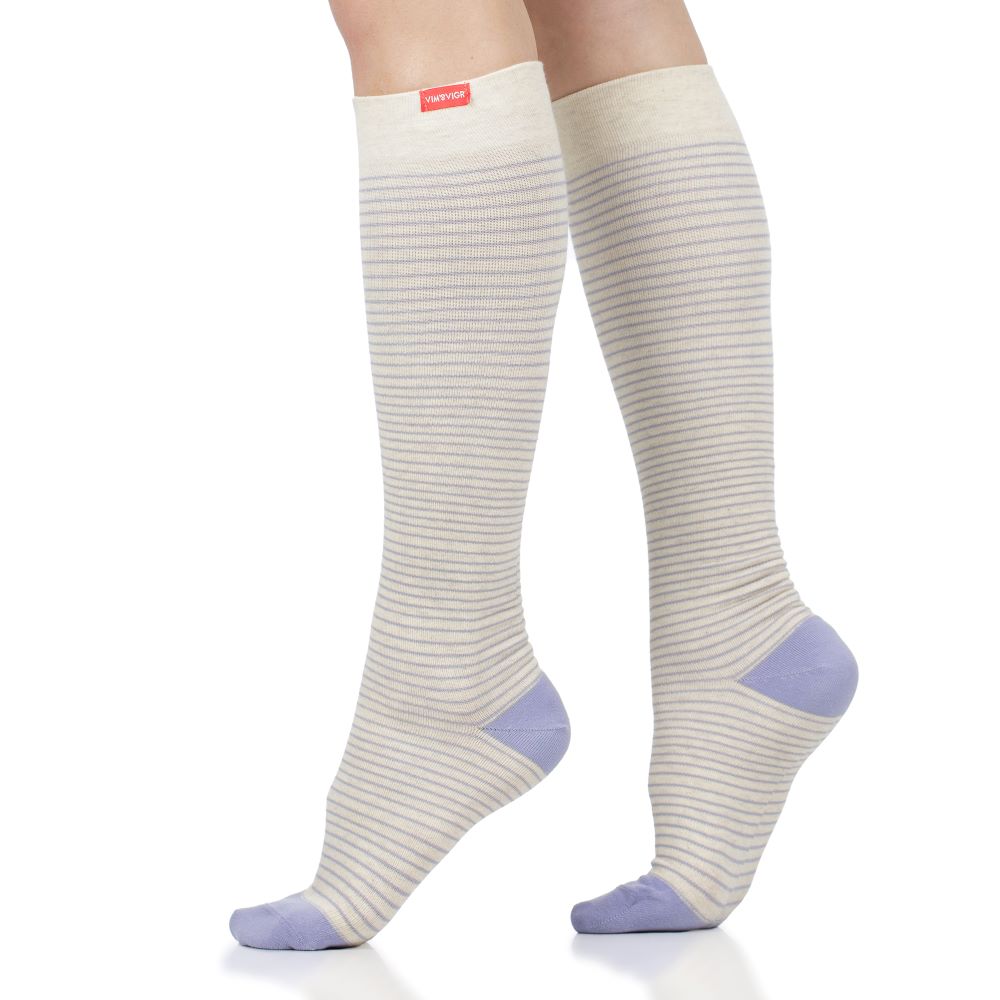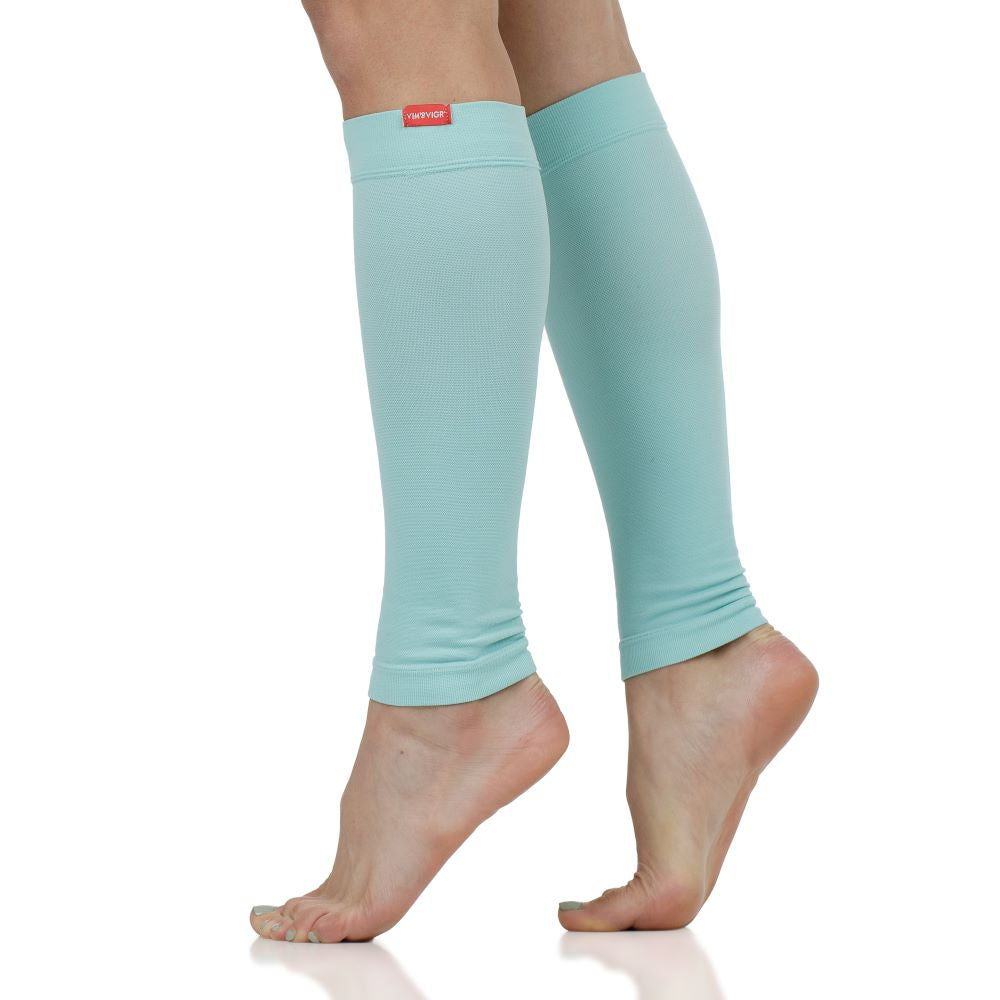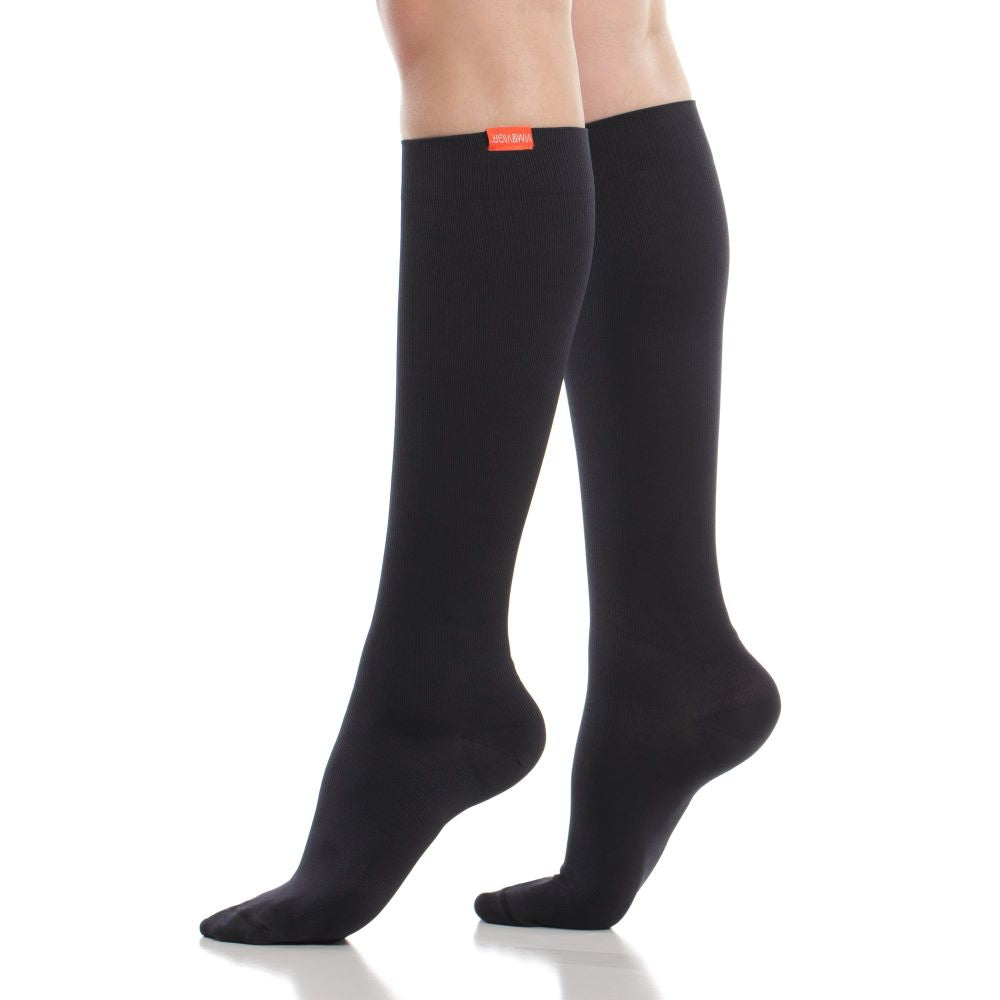Compression Socks for Cold Feet: Do They Help?
For those who suffer from peripheral blood flow problems, the question of how to find socks for poor circulation and cold feet is massively important. Whether you’re the type who’s always cold, or suffer from standing up for long periods of time throughout the day, from sitting down in crammed spaces like on airplanes, or simply have bad peripheral circulation, compression socks could be a great solution.
How do compression socks help if you suffer from cold feet, what are the reasons for cold feet and what can you do to warm up?
In this article, we’ll look into the main causes for cold feet and how you can make yourself warmer thanks to compression socks in the case of poor blood flow. We’ll cover how compression socks help and the best choices for this particular issue.
Do Compression Socks Help with Cold Feet?
Most people don’t benefit from proper blood circulation in their lower legs. This leads to fatigue, swelling, and the potential development of varicose veins. It also makes you feel cold, so there is always a benefit from boosting blood flow in the lower limbs from that point of view.
Wearing compression socks is not a medical treatment in itself. Anyone can benefit from wearing a pair of good-quality socks in the most appropriate size and compression level for them. Keeping your blood flowing well in the lower limbs will make you feel more comfortable on long hikes, runs, days where you stand around a lot or on long flights. It will also prevent that feeling of cold feet that can spread through the body and lead to unpleasant days altogether.

Why Are My Feet Always Cold?
If you’re always the one complaining about cold feet, you know how frustrating it is regardless of the season and weather conditions. Often, your cold feet have nothing to do with how nice it is outside or even with what you’re wearing! Let’s have a look at the most frequent causes for cold feet that we can address with wearing compression socks.
Poor Blood Circulation
When blood doesn’t flow continuously throughout your body, it’s simply not transporting the oxygen that you need for your limbs to stay mobile and feel comfortable. If you think about getting “pins and needles” from your feet going numb after sitting too long in one position, doesn’t that also make you feel cold?
It’s all about poor blood flow! This can be caused by a range of root problems, such as:
-
Atherosclerosis – a condition that leads to your arteries become clogged with fatty substances called plaques. As the arteries are the conduits through which blood flows, when plaques start clogging them up, there is less room for blood to go through. Moreover, the arteries harden and narrow, increasing the risk of blood clots that can – in extreme circumstances – block the flow of blood to your brain or heart.
- Your risk of atherosclerosis increases with age, and people who smoke or have a high-fat diet, are overweight or obese are more at risk of developing it.
- Low body fat can also be an issue – for bodies with extremely low levels of body fat (i.e. unhealthy), the priority will be to insulate heat for the organs. This, in turn, leads to more blood being diverted away from the extremities so will make feet colder.
- Other medical conditions, e.g. diabetes.
Nerve Problems
Developing nerve damage can make your feet cold, too. Also known as neuropathy, this means that the nerves that sense the cold don’t work as well, which leads to making your feet feel cold when they may not be.
Medical Conditions
There are a number of medical conditions that all connect with poor circulation and lead to making you feel cold feet. These include diabetes, autoimmune diseases like anemia, heart disease, hormone problems, venous insufficiency and Raynaud’s disease.
Raynaud’s disease (also known as Raynaud’s phenomenon) is a condition affecting the blood vessels in the fingers and toes. It causes them to tighten or close when faced with temperature extremes, as well as in certain occupational exposures or excitement situations. This means that blood flow will be limited towards your feet, obviously making your feet colder.
How Can Compression Socks Help with Cold Feet?
To understand how compression socks can help you stay warm in cold temperatures, we need to look at how they work in general. Through applying therapeutic pressure (at various levels), compression socks relieve the discomfort from standing up and/or not moving regularly, supporting the blood flow throughout the lower limbs. As a result, blood is able to move oxygen around into your legs, preventing the creation of blood clots or swelling.
By enabling blood to flow freely, compression socks can help make you feel warmer. This is especially the case if you have poor circulation and struggle to keep your hands and feet warm in all kinds of weather (summer or winter alike!). Moreover, wearing a pair of merino wool compression socks can make a huge difference in temperature regulation. They insulate your feet in winter, while also allowing for quick drying if you are out hiking in bad weather. They are also great for summer, when their moisture wicking properties mean that your feet will not retain the sweat and risk getting colder when temperature changes.

Do Compression Socks Keep Your Feet Warm?
You can buy compression socks in different thicknesses and out of various materials, but even if you just stick with thinner, nylon ones, you will still get the blood flow boosting benefits that mean your feet will stay warmer than in regular socks. Through the pressure they apply to your lower limbs, you’ll get multiple benefits from wearing compression socks:
- Pain and pressure relief;
- Reduction in swelling;
- Preventing blood from pooling in your lower legs;
- Fatigue reduction.
All of these combine to make your feet feel warmer, more comfortable and overall happier in all seasons and regardless of the weather conditions. As long as you choose the best level of compression for you and wear them correctly, compression socks can be your secret weapon against cold feet, no matter the underlying reason for them.
The Best Compression Socks for Poor Circulation and Cold Feet
To make the most of the benefits of compression socks for cold feet, always ensure you’re wearing an appropriate size and compression level to feel some pressure, but not get uncomfortable. Compression socks come in a wide range of fabrics and styles, and we offer a broad spectrum of designs and styles to suit your preferences.
Keep your feet warm and your blood flowing optimally by wearing your socks correctly, but don’t worry about wearing them for too long or even sleeping in them! Our collection will be comfortable enough for bed, but we do advise that you try wearing them for a whole day first, then see how you feel about the compression level.
Try out the different styles and pressure levels and keep your feet warm and dry through summer, winter, and everything in between!


















Leave a comment